Commanding General of the United States Army
| Commanding General of the United States Army | |
|---|---|
| Department of War | |
| Reports to | Secretary of War |
| Appointer |
The President with Congress advice and consent |
| Formation |
June 15, 1775[nb 1] June 1821[nb 2] |
| First holder |
GEN George Washington[nb 1] MG Jacob Brown[nb 2] |
| Final holder | LTG Nelson A. Miles |
| Abolished | August 8, 1903 |
| Succession | Chief of Staff of the Army |
Prior to the institution of the Chief of Staff of the Army in 1903, there was generally recognized to be a single senior-most officer in the United States Army (and its predecessor the Continental Army), even though there was not a statutory office as such. During the American Revolutionary War (1775–1783), the title was Commander-in-Chief of the Continental Army. In 1783, the title was simplified to Senior Officer of the United States Army. In 1821, the title was changed to Commanding General of the United States Army. The office was often referred to by various other titles, such as "Major General Commanding the Army" or "General-in-Chief."
From 1789 until its abolition in 1903, the position of Commanding General was legally subordinate to the Secretary of War, although this was at times contested.[nb 3]
The position was abolished with the creation of the statutory Chief of Staff of the Army in 1903.
Office holders
Commander-in-Chief of the Continental Army
| # | Name | Photo | Term began | Term ended | Notes |
|---|---|---|---|---|---|
| 1. | GEN George Washington | 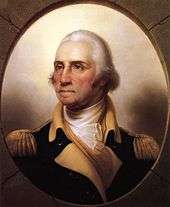 | June 15, 1775 | December 23, 1783 | Appointed by the Second Continental Congress, after being nominated by John Adams. Resigned at the end of the American Revolutionary War. |
Senior Officer of the United States Army
| # | Name | Photo | Term began | Term ended | Notes |
|---|---|---|---|---|---|
| 1. | MG Henry Knox |  | December 23, 1783 | June 20, 1784 | Resigned to begin career farming and developing land in Maine; appointed Secretary of War under Articles of Confederation in 1785. |
| 2. | Brevet MAJ John Doughty |  | June 20, 1784 | August 12, 1784 | Served when all of the Army but 80 men were discharged. |
| 3. | Brevet BG Josiah Harmar | 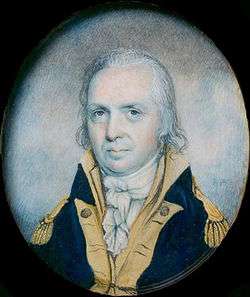 | August 12, 1784 | March 4, 1791 | Removed by President George Washington in the aftermath of the Harmar Campaign. |
| 4. | MG Arthur St. Clair |  | March 4, 1791 | March 5, 1792 | Simultaneously served as Governor of the Northwest Territory (1787–1802). Resigned as Senior Officer at the request of President George Washington, in the aftermath of the St. Clair's Defeat. |
| 5. | MG Anthony Wayne | 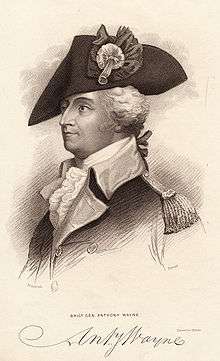 | April 13, 1792 | December 15, 1796 | Died in office. |
| 6. | BG James Wilkinson | 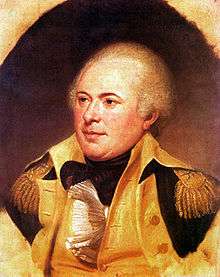 | December 15, 1796 | July, 13 1798 | First tenure. |
| 7. | LTG George Washington |  | July 13, 1798 | December 14, 1799 | Appointed during the Quasi-War against the French Republic. Did not actively command the Army during this period but was prepared to lead the Army if the need arose. Died in office. |
| 8. | MG Alexander Hamilton |  | December 14, 1799 | June 15, 1800 | Served as Inspector General of the Army with rank of major general from July 19, 1798. Became Senior Officer in the Army after the death of Washington. |
| 9. | BG James Wilkinson |  | June 15, 1800 | January 27, 1812 | Second tenure. Promoted to major general during the War of 1812 and retired on June 15, 1815. |
| 10. | MG Henry Dearborn |  | January 27, 1812 | June 15, 1815 | Previously served as Secretary of War (1801–1809). Last American Revolutionary War veteran to serve as Senior Officer. |
| 11. | MG Jacob Brown |  | June 15, 1815 | June 1821 | Appointed commanding general of the Army. |
Commanding General of the United States Army
| # | Name | Photo | Term began | Term ended | Notes |
|---|---|---|---|---|---|
| 1. | MG Jacob Brown |  | June 1821 | February 24, 1828 | Died in office. |
| 2. | MG Alexander Macomb |  | May 29, 1828 | June 25, 1841 | Died in office. |
| 3. | Brevet LTG Winfield Scott |  | July 5, 1841 | November 1, 1861 | Personally commanded the Army in the Battle for Mexico City in 1847, during the Mexican–American War. Upon his retirement, at the commencement of the American Civil War, he was the oldest serving Commanding General of the U.S. Army in history at age 75. |
| 4. | MG George B. McClellan |  | November 1, 1861 | March 11, 1862 | Simultaneously served as Commander of the Army of the Potomac. Removed by President Abraham Lincoln in order to focus on the Peninsula Campaign. |
| Vacant (March 11, 1862 – July 23, 1862)[nb 4] | |||||
| 5. | MG Henry Halleck |  | July 23, 1862 | March 9, 1864 | Reassigned as the Army's chief of staff, subordinate to Grant. |
| 6. | GEN Ulysses S. Grant |  | March 9, 1864 | March 4, 1869 | Resigned to become the 18th President of the United States (1869–1877). |
| 7. | GEN William Tecumseh Sherman |  | March 8, 1869 | November 1, 1883 | Resigned position; retired upon reaching mandatory retirement age of 64 in 1884. |
| 8. | GEN Philip Sheridan |  | November 1, 1883 | August 5, 1888 | Died in office. |
| 9. | LTG John Schofield |  | August 14, 1888 | September 29, 1895 | Retired upon reaching mandatory retirement age of 64. |
| 10. | LTG Nelson A. Miles | 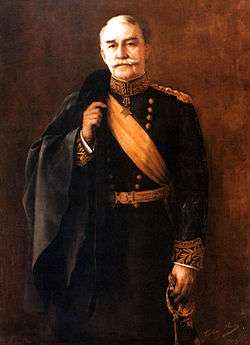 | October 5, 1895 | August 8, 1903 | Retired upon reaching mandatory retirement age of 64. |
See also
References
- Notes
- 1 2 Commander-in-Chief of the Continental Army
- 1 2 Commanding General of the United States Army
- ↑ King
- ↑ Eicher, Civil War High Commands. The gap from March 11, 1862 to July 23, 1862 was filled with direct control of the army by President Abraham Lincoln and Secretary of War Edwin Stanton, with the help of an unofficial "War Board" that was established on March 17, 1862. The board consisted of Ethan A. Hitchcock, the chairman, with Department of War bureau chiefs Lorenzo Thomas, Montgomery C. Meigs, Joseph G. Totten, James W. Ripley, and Joseph P. Taylor.
- Footnotes
Bibliography
- Historical Resources Branch; United States Army Center of Military History.
- Eicher, John H.; Eicher, David J. (2001). Civil War High Commands. Stanford University Press. ISBN 0-8047-3641-3.
- Bell, William Gardner (2005). Commanding Generals and Chiefs of Staff 1775-2005: Portraits and Biographical Sketches. Washington, D.C.: United States Army Center of Military History.
- King, Archibald (1949/1960 reprint). Command of the Army (PDF). Military Affairs. Charlottesville, Virginia: The Judge Advocate General's School, U.S. Army. Check date values in:
|date=(help)

